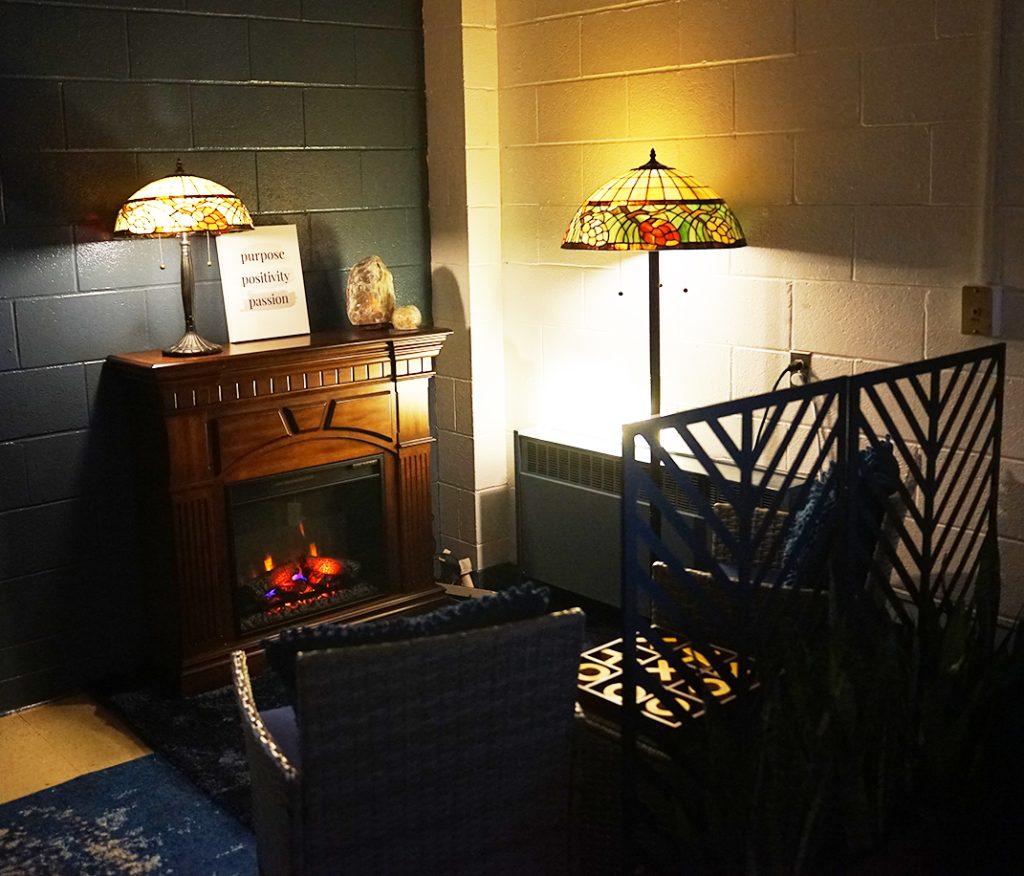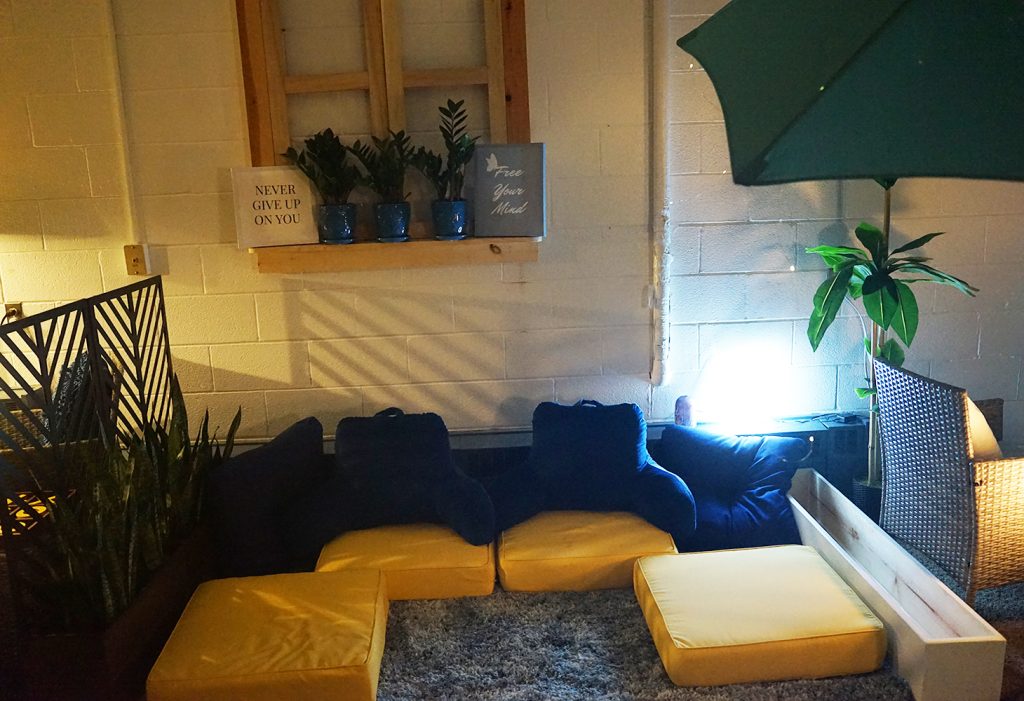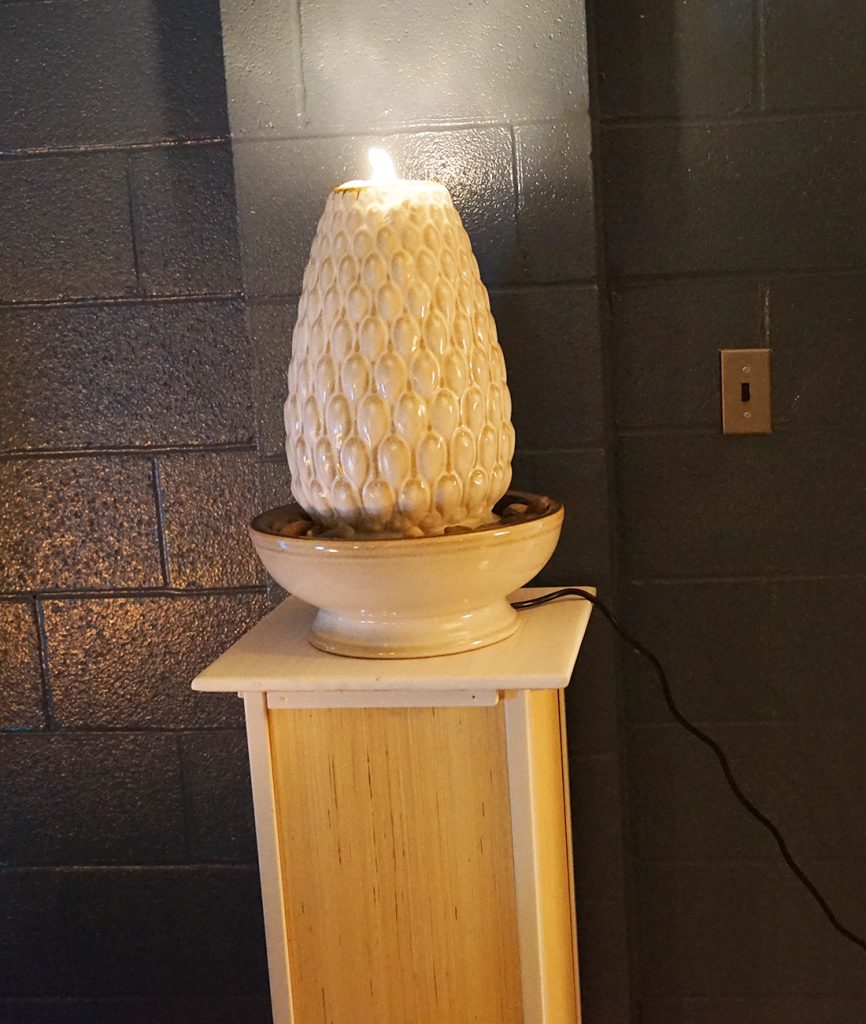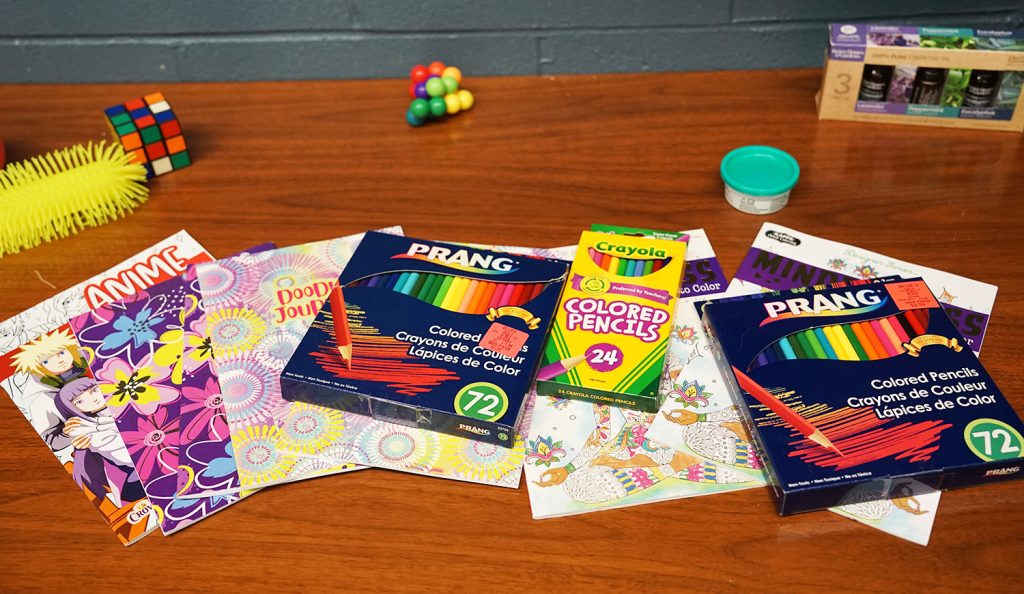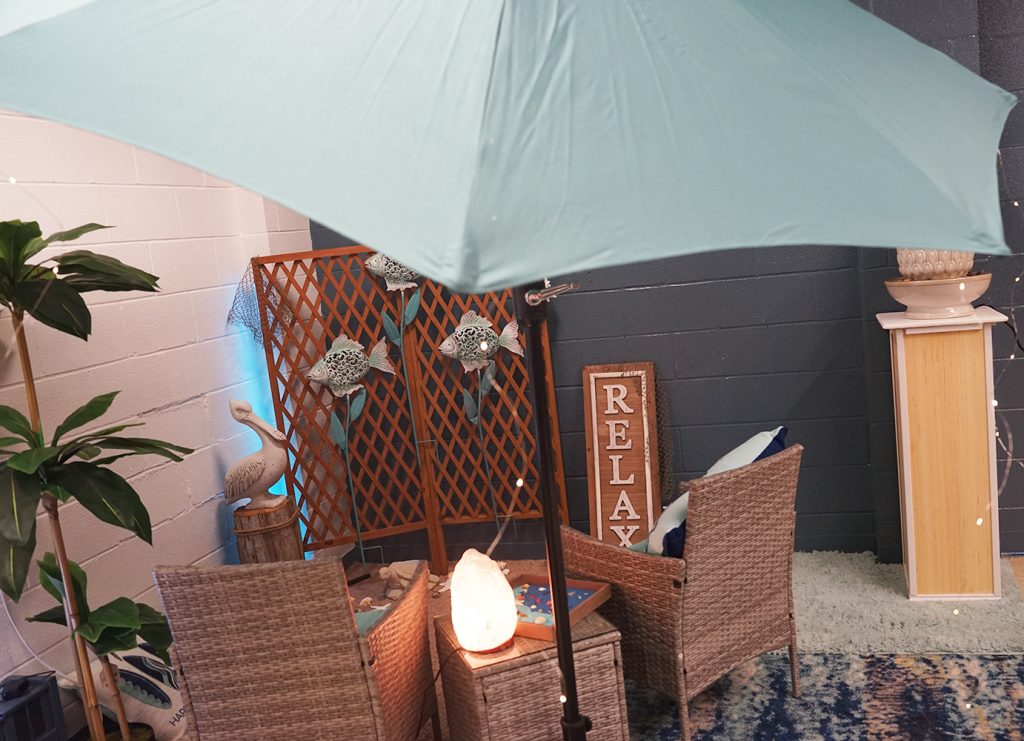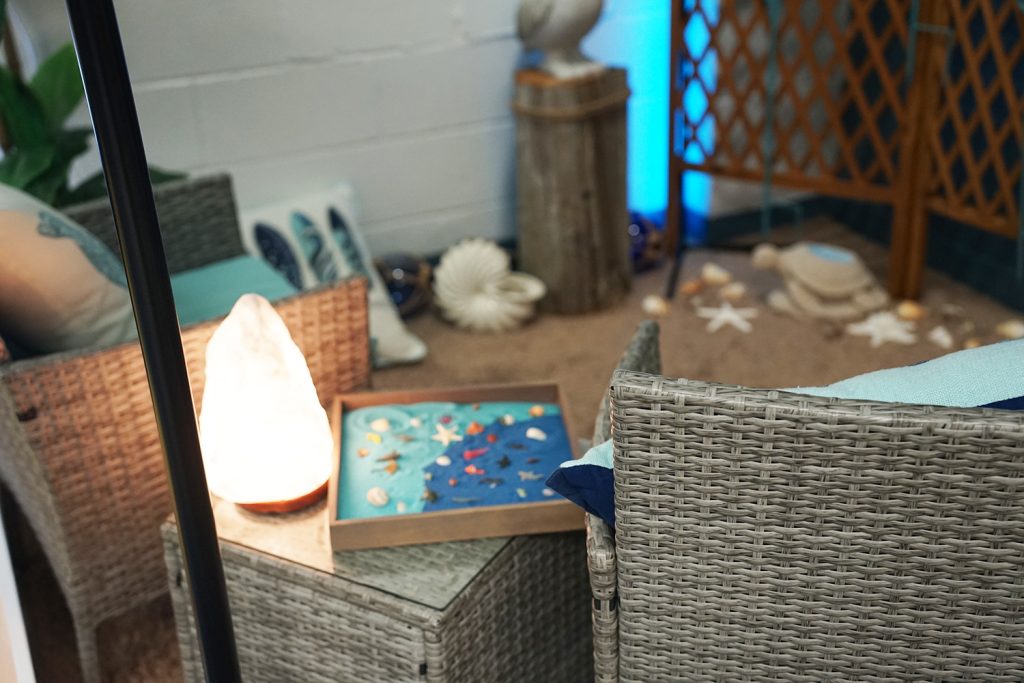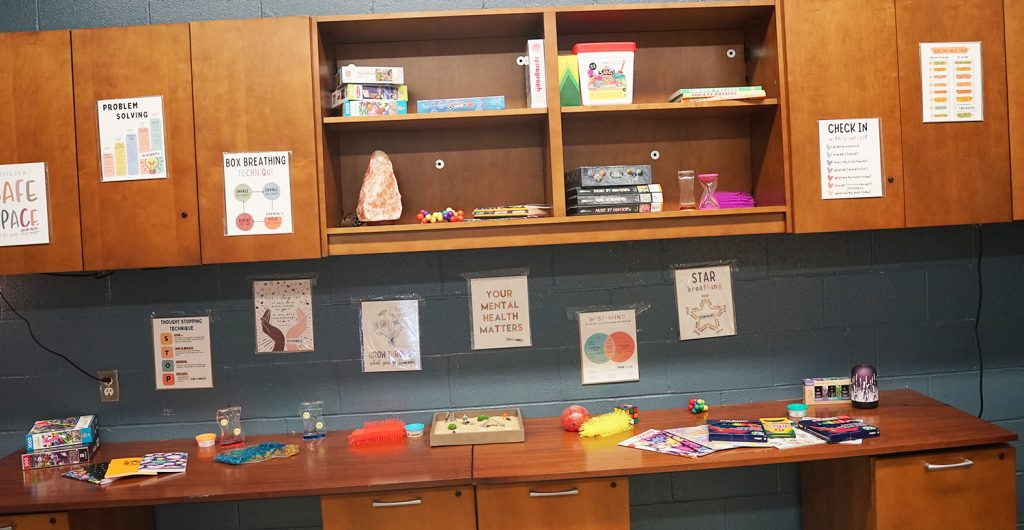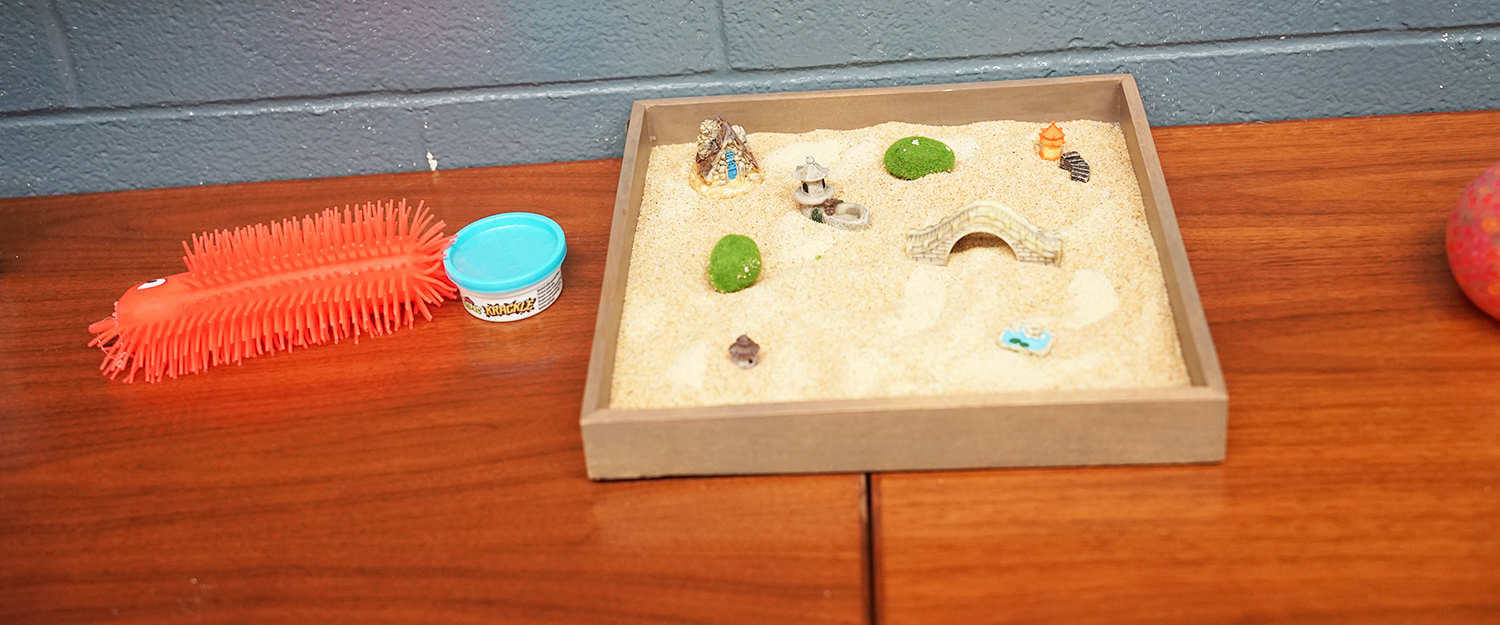
As East Allegheny high school principal Candee Morris talks about the newly-formed wellness space in the East Allegheny Junior/Senior High School — entitled The pEAce Place — you can hear the rustling from the fish tank in her office. The office is an extension of Morris, a space filled with various materials that support Morris’s calm, wellness-focused demeanor.
In some ways, The pEAce Place is almost a larger manifestation of Morris’s office, which has at times acted as a safe space for a number of students. The pEAce Place is one of two new wellness spaces being formed in the district. The other is being put together at Logan Elementary. Both spaces are funded through Project SEEKS SES, a partnership between the Allegheny Intermediate Unit (AIU) and the Allegheny County Health Department (ACHD) that addresses trauma, behavior and mental health issues in ten school districts.
“We focused on the Junior/Senior High School first based on need and based on a very natural space that lent itself to the purpose. The purpose is to give students a calm space, to give them a space that they can use for centering thoughts, focus on their mental health, and emotional self-regulation skills. And it’s a space that they can have some say in, that they can call their own,” said Joe DiLucente, the district’s Acting Superintendent.
The pEAce Place is equipped with a number of calming spaces. One includes a nook with an electric fireplace, stained glass, ambient lighting, and chairs. Another has comfy yellow cushions, lush plants, and a faux window. A third area is a view of the ocean, floor to ceiling, complete with sand-colored carpet, a beach umbrella, seashells, and gray wicker chairs. A 75-gallon fish tank serves as a divider between two of the spaces, coupled with the calming sound of an illuminated water fountain that completes the aura of the room.
Every piece of the room is carefully crafted towards the space’s overall purpose. Additional amenities include zen sand gardens, books, fidgets, and journals. Even the walls of the room reflect reminders of positivity and affirmation, as well as breathing techniques to help The pEAce Place visitors center themselves during emotional crises.
Dave Loya, the district’s athletic director, will spend his time helping students in The pEAce Place. Loya is a Crisis Prevention Institute (CPI) trainer who specializes in deescalation.
“The pEAce Place is really for kids to take a minute, re-center, and prepare to persevere. Unfortunately, trauma is pervasive with our young people. Those feelings can manifest later as negative behaviors that create obstacles to education,” Morris said. “The pEAce Place is proactive. We want to have mechanisms in place to keep kids in their formal educational environment.”
The pEAce Place is open to teachers and staff, too. Morris and DiLucente both stressed the importance of staff wellness, especially in a day and age when teacher burnout is all too present.
“I think as students’ mental health needs increase, teachers have adopted additional roles. So teachers are not only trying to make academic accommodations and ensure that students are growing with their school work, they’re also meeting their social and emotional learning needs,” DiLucente said.
“And these things aren’t happening in a vacuum. The overlay is constant throughout the day. And you dovetail that with some lack of community awareness around all it is that a teacher does, and teachers are left to pick up the pieces of being in such a difficult field in trying times without much recourse for their own mental health.”
Morris said she was planning The pEAce Place before the district found out that it would be receiving funding through Project SEEKS SES. There’s always been a need for a safe, calming space, but that need has been exacerbated in the aftermath of the COVID-19 pandemic.
“Not only are we seeing the need in a big way, but I’ve noticed the need over the course of last year and early in this year early in the day right away, which to me is indicative of some things emanating from the home life that kids are bringing with them to school, and that need to address it is pervasive,” DiLucente said.
“It’s certainly more pervasive and it’s something that we notice as a cloque that lasts at all times, rather than the pre-pandemic normality that there was an event that led directly to a child being upset.”
Morris said The pEAce Place will be used for grade 9-12 students on a referral basis. Students can self-refer, or be referred to the space by fellow students or teachers and staff. Upon checking into The pEAce Place, students will complete a self-assessment, detailing why they think they were referred to the space, and what techniques typically work to center them. They will get 15 minutes to themselves in the space before Loya checks on them. If they feel they still need to be in the space after that initial period, they will get another 15 minutes. If they’re still experiencing issues after the full 30 minutes, they’ll be referred to the school counselor to help them work through the situation.
“Our focus is to have it really be student-centered, and to have them self-analyze their emotions and learn how to emotionally regulate,” Morris said.
“So many times, kids feel anxious and they text or call home and a parent comes and picks them up. And then they’re missing school and they haven’t learned to manage their stress or anxiety by using mechanisms that are always available to them.”
The pEAce Place will not only act as a short-term solution, Morris hopes, but rather also as a catalyst for growth. Learning wellness methods and ways to self-regulate are invaluable skills that can only serve to make life a little easier down the road.
“I want kids to learn as much as they can in this space, but most importantly, I want kids to be resilient, develop grit and persevere. That’s incredibly important because if you learn all of that — even if the academics come slow — you’ll be able to do whatever you put your mind to,” Morris said.
“You just need something to remind you that everything is going to be OK, and this too shall pass; we grow through what we go through.”
